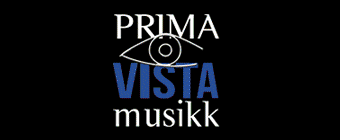The set works that will be used at the Finals of the 2015 National Championships of Great Britain have been officially announced.
Compositions by Thomas Doss, Kenneth Hesketh, Stephen Roberts, Oliver Waespi and Dan Price will be featured in an enticing mix of styles and inspiration in London and Cheltenham in the Autumn.
Set works
Championship Section:
Spiriti (Thomas Doss)
Published by Mitropa Music, distributed by Hal Leonard MGB
Following a great deal of speculation, the 20 Championship Section contenders at the Royal Albert Hall will have to get to grips with ‘Spiriti’ by Thomas Doss.
Originally written as the set work for the 2010 European Brass Band Championship in Linz, Austria, it has since gained a great deal of critical and popular acclaim from performers and audiences alike around the contesting world.
Inspired by the Bach chorale ‘Für deinen Thron tret´ ich hiermit’ found in Bruckner’s Fifth Symphony and at the central core of the Doss composition itself, the composer explores the textures and colours of the brass band with an engrossing orchestral sweep of ideas and invention; swirling, scattering and re-linking themes and motifs with immense ingenuity — from quarter tone yearnings to a full blown epic climax.
First Section:
The Alchemist’s Journal (Kenneth Hesketh)
Published by Faber Music
A new adaptation of Kenneth Hesketh’s ‘The Alchemist’s Journal’ will have to be mastered by bands in the First Section.
Originally commissioned by the Brass Band Heritage Trust for Black Dyke to perform at the 2002 RNCM Festival of Brass, it is inspired by the mysteries of alchemy — which inspired the popular book of the same name by author Evan S. Cornell. This latest adaptation has been skillfully undertaken by Paul Hindmarsh.
Hesketh also explores the processes of change and transmutation in his interlinked variations — one leading to the next; all from an initial six note cell that results in an unfolding work of contrasting styles and unsettling mystery — all in the search of turning base metal into gold.
Second Section:
The Snaring of the Sun (Stephen Roberts)
Published by Tanglewind Music
Inspired by Polynesian folklore, ‘The Snaring of the Sun’ tells of the Maori legend of demi-god Maui, who used his magic powers to capture the sun and stop it from crossing the sky too fast.
After trekking to the crater in which the sun slept and ensnaring its beams with magical ropes, Maui persuades the sun to agree to travel more slowly, especially in summer, so mankind can enjoy the benefits of its rays.
It was originally written in 2015 for the National Youth Band of New Zealand and is series of highly descriptive scenes which outline the story from the opening descending sunrise through to the trek to the volcano, the capture of the sun’s rays and the final triumphant arc of its new radiance.
Third Section:
The Graces of Love (Oliver Waespi)
Published by Beriato Music, distributed by Hal Leonard
For the second successive year, bands at the National Finals will get to enjoy the compositional skills of Swiss composer Oliver Waespi.
Following ‘Traversada’ comes ‘The Graces of Love’ (Le Gratie d’Amore), which like his recent Championship Section work, ‘As if a voice were in them’ has a literary inspiration — this time from a book published in 1602 by Cesare Negri, the famous Renaissance dance master to the Milanese court.
It contains numerous dance tunes and precise descriptions of courtly dances; from ‘Il bianco fior’ (The White Flower) on which the first vigorous movement is based, through to the second, the calm, contemplative, ‘Vaghe bellezze ...’ (Veiled Beauty …), featuring two main solo lines.
Finally, the third movement contains a saltarello with a hypnotic rhythm, ending the work with flair, gusto and noble virtuosity.
Fourth Section:
Visions (Dan Price)
Published by Prima Vista Musikk, distributed by SP&S Ltd
The work was originally commissioned in 2010 by the Briton Ferry Band in West Wales, with its four movements painting an evocative musical portrait of the small town (Llansawel in Welsh) which is located snugly in the mouth of the river Neath.
It reflects the dramatic changes in the town’s history — all linked to the river which has fed its past, present and future prosperity; from the bucolic beauty of the opening ‘Briton Ferry’ movement based on a three note motif first heard on baritone, through to the development of Isambard Kingdom Brunel’s famous dockyards and the thriving steel and tinplate industry of the early 20th century.
The third movement ‘Giant’s Grave’ recalls the melancholic decommissioning process of old Second World War battleships, with their faint echoes of glories past, whilst the finale, ‘Hen Gastell’ (Old Castle) looks even further back to the time of the Romans and through to the middle ages.

















